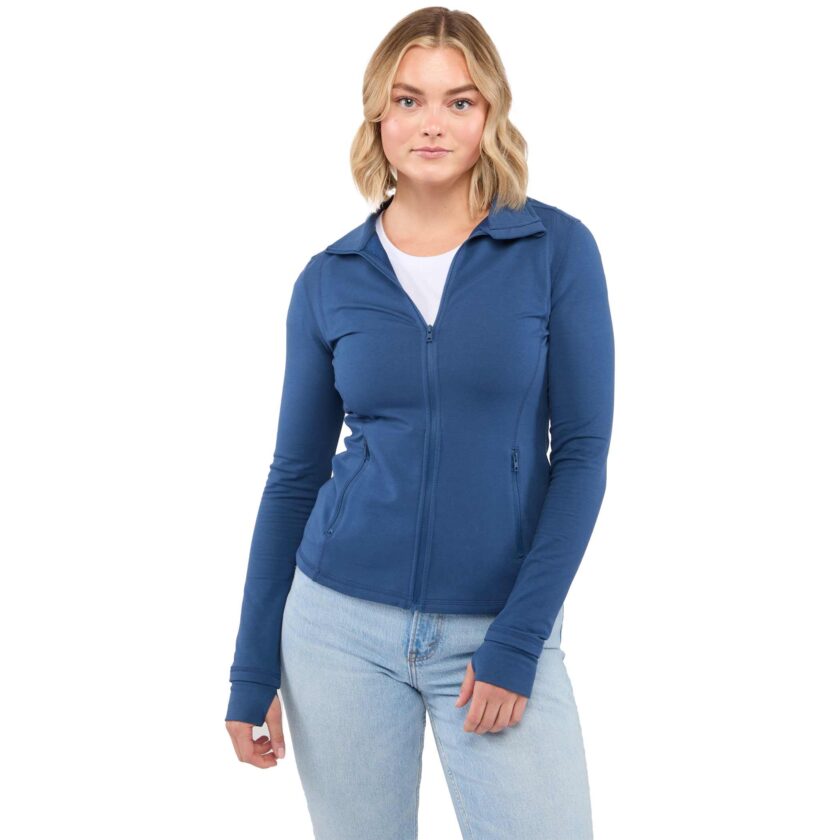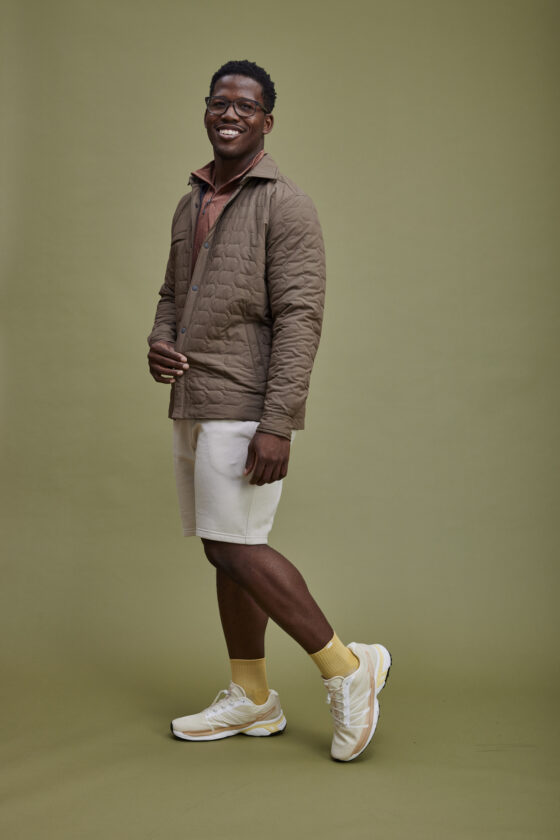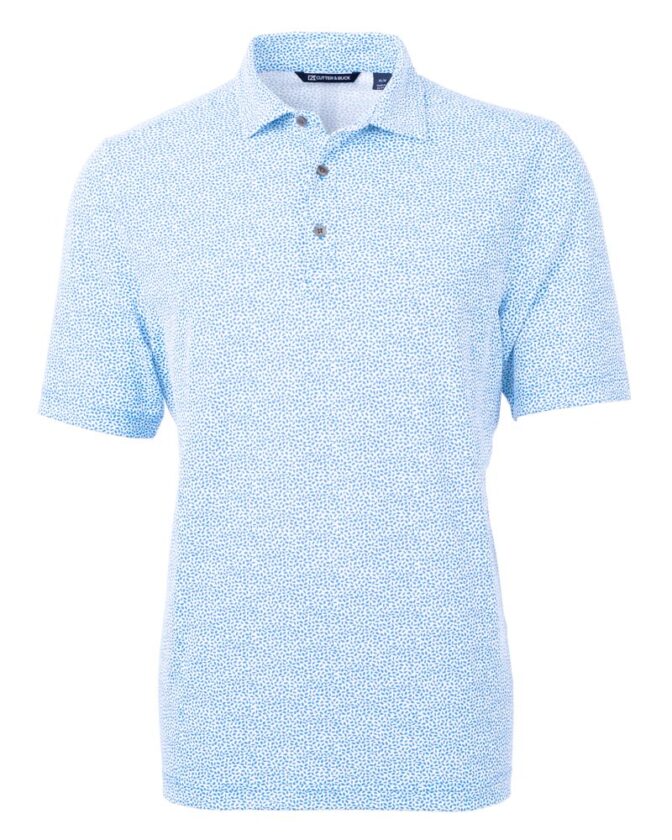The world of corporate wear hasn’t looked quite the same since the pandemic had employees logging on from their bedrooms instead of the office.
But even as the workforce has shifted back to a more traditional environment over the past year, with increased hybrid schedules and return-to-office mandates, one thing employees haven’t been willing to give up is the comfortable, casual attire of work-from-home.
“Every business, I believe, is more and more casual,” says Mike Rubin, vice president of sales at Counselor Top 40 supplier Cutter & Buck (asi/47965). “Every day is Casual Friday.”
That doesn’t mean employees are exclusively lounging around in office-approved sweatpants. AJ Dickson, senior category director at Counselor Top 40 supplier PCNA (asi/78897), says he’s noticed that, while comfort is high priority, people are still leaning back into a more professional feel.
“That’s really the biggest shift I’ve seen,” Dickson says. “People want to still be comfortable, but they want to look presentable – they want to look nice.”

its Pacesetter collection, which
includes a hoodie and quarter zip
(shown here, 2345), is its softest
fabric choice.
Not Just Corporate Wear
A big reason for the emphasis on comfort is because employees aren’t treating their business casual attire as exclusively for work.
Whether or not they’re back in the office, what they wear for work is no longer only reserved for 9-to-5 hours. There’s not a hard transition between “work” and “life” anymore, says Dickson. And that means branded corporate apparel has to be something professional enough for the office – but also something employees want to wear after they log off for the day, regardless of whether they are working remotely or in person.
“You want to go straight to the gym or go straight into that happy hour with friends, whatever the case may be – you’re not willing to give up that time, so you want some pieces that are going to work for that lifestyle,” Dickson says.

Because of that, transitional pieces that can be worn either for a corporate meeting or running to the grocery store have become key – typically leaning into upscale athleisure trends.
“Quarter zips and layering pieces are where we’re seeing the most growth in the past six months,” says Rubin.
The “all-day” approach to business casual attire is why the feel of the product has become more important for consumers, says Doug Jackson, president of outerwear supplier Storm Creek (asi/89879).

People are reaching for softer fabrics with more stretch.
“It’s just amazing what happens when you get people to find that one they really like the feel of,” Jackson says. “Price doesn’t matter as much because they really want to wear it, and they want to wear it all the time versus just at the office.”
Affordable Sustainability
A decade ago, a sustainable polo option often cost 50% more – or even double – the standard option, causing many companies to hesitate on making the leap to eco-friendly promo, says Rubin.

Now, there’s plenty of more affordable options, and large corporate clients especially continue to ask for work apparel made from recycled materials.
At this point, says Dickson, sustainability is almost table stakes; while being made from eco-friendly materials doesn’t outweigh a polo looking less stylish or well-fit, sustainable offerings are more of an expectation than a true selling point of an apparel item.
“I think the way that sustainability and compliance play hand in hand this year is going to be way more apparent and way more in your face than it has before,” Dickson says.
Or, as Jackson puts it, “A lot of companies are going to start asking a lot more questions.”
A Pop of Color
Also in contrast to the stereotypical business basics uniform? The popularity of printed polos as opposed to the standard dark hues.
Rubin says he hears requests from customers and sales reps every day for polos in a variety of patterned or striped styles, even if the print is subtle. He notes that the styled polos are often meant for C-suite executives or managers, especially in the restaurant industry.

“They’re looking for something different to give to managers to make it a little more upscale – and stand out,” Rubin says. “Just different than a solid polo.”
Even if companies are sticking with solid styles for their corporate wear, they’re still branching out from the classic black and dark gray color options, and from specific company-branded hues.
PCNA’s Dickson says earthy neutrals have been trending – tans, grays and browns, possibly inspired by the 2025 Pantone Color of the Year, Mocha Mousse. At Storm Creek, clients are gravitating toward muted browns and the supplier’s line of sandwashed shades, from melon to canvas.
“In the past, they said everyone’s got to be in this blue shirt because it’s our company blue,” says Jackson. “Now, there’s free reign a lot of times. They’re wanting brighter colors or wanting more fun.”
Subtle Decoration
Left chest will always be prime logo placement for polo shirts and other corporate attire, but just as the way people meet has changed, clients are leaning toward more subtle, yet still visible, decoration locations.
Logos on the collar or back of the neck have become more popular, says Dickson, as has placement on the upper arm or down the sleeve of a quarter zip or layering piece.
“If I had that logo there, it’d still be visible in a meeting, but when you transition and you’re taking your kids to their next activity or running to the grocery store, it doesn’t necessarily come across as a corporate uniform,” Dickson says. “It looks a little bit more elevated, a little bit more retail.”
In turn, he also predicts the popularity of performance-driven decoration methods, like textured emblem transfers or monochrome color choices, over more heavyweight embroidery.
Both the type of decoration and its location, then, will likely become increasingly important to prove the consumer has truly been considered, Dickson anticipates.
“As the apparel becomes more elevated, more sophisticated and more elegant, you want the decoration to match that,” he says. “Or else what’s the point?”



